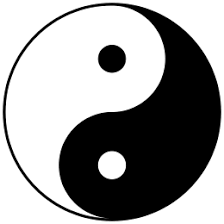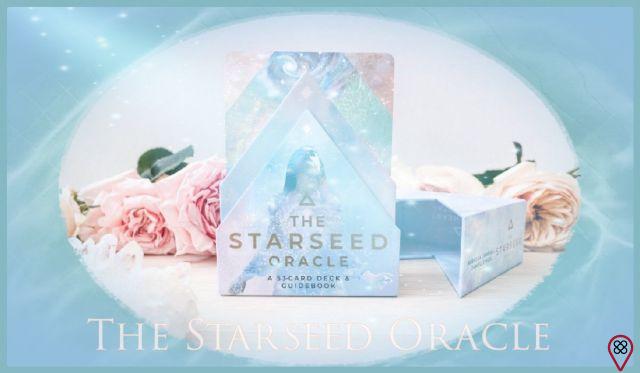
Many people may not even have heard about Yin Yang, but it is practically impossible to know someone who has never at least seen the symbol that is associated with this concept related to Traditional Chinese Philosophy and Taoism. But do you know what Yin Yang is and how it relates to one of life's greatest truths: balance and harmony is everything?
We have prepared an article that explains the origin and meaning of Yin Yang, as well as how it relates to the philosophical-religious current known as Taoism and how it has everything to do with the lives of us human beings. Check out!
Origem do Yin Yang
It is difficult to pinpoint the exact origin of the Yin Yang concept, but it is known that it arose from one of the 100 schools of thought that flourished in China between the 221th century and XNUMX BC, a time known as the Spring and Autumn Period and considered the golden age of Chinese philosophy. The school in which this concept emerged was called Yin Yang.
The original concept preached that the Universe is ruled by a cosmic duality, that is, two complementary and conflicting forces that can be observed in everything that is natural. Yin was associated with the feminine, the dark, the earth and passivity, while Yang was associated with the masculine, light, heaven and that which is active. According to the original concept, if these two opposing forces become unbalanced, their very existences are in jeopardy.
With the development of Taoism, a philosophical and religious tradition that began to develop shortly afterwards, especially consolidated in the work of the philosopher Lao-Tzu, the Yin Yang was incorporated into this philosophical-religious current, gaining the importance it has today.
Currently, despite continuing to be related to a philosophical and religious current in China, the Yin Yang has become international and is one of the best-known symbols of humanity.
What is the meaning of Yin Yang
Yin Yang is the most important concept of Traditional Chinese Philosophy, a current of philosophical thought that was developed in China in the XNUMXth century and is based on guiding human beings to promote balance and harmony in their routine, in addition to defending the union between human being and nature and the reflection on the opposing forces that act in the world, represented by the symbol and the concept of Yin Yang. Other important concepts for this philosophy originating in China are respect for authority, benevolence, generosity, justice and uprightness of behavior. The main book that compiles these teachings is the I Ching and the most important philosopher of this philosophy was Confucius.
The Yin Yang, according to the concepts of Traditional Chinese Philosophy, is a principle of dualities present in nature - including human nature. According to this theory, the positive would not exist without the negative, and vice versa. That is, opposing forces need each other in order to exist and act freely. As explained earlier, this philosophical current developed in China preaches balance and harmony, so it is natural that the concept of Yin Yang is directly related to balancing these two forces, because, according to this principle, it is impossible to be completely positive and be nothing. negative or vice versa.
The Yin Yang symbol, known worldwide, first appeared in the book “Discernments on the diagrams of mutations”, written in the period of the Qing dynasty (1644-1912). This famous Yin Yang symbol is a sphere with a white side at the top (with a black dot at its center) and a black side at the bottom (with a white dot at its center). These different colored dots are not positioned there by accident. According to Traditional Chinese Philosophy, these points represent the apex, the highest point of opposing forces, which, being the peak, awaken the opposite within themselves. That is, something very positive will naturally, at some point, arouse a feeling opposite to that positivity.
According to this philosophical current, these two opposing and, at the same time, complementary forces make up everything that exists in the world and it is only because of the conflicting interaction and harmony between these two forces that any movement or change becomes possible. Some examples of these simultaneously complementary and conflicting forces are: light/dark, light/shadow, day/night, cold/heat, life/death and spirit/body.
In addition, Yin Yang, in Chinese, is represented by the ideogram 阳, where the first character means “mountain”, representing that we can see a mountain when there is light, and the second character means “Moon”, in reference to darkness and the impossibility of visualizing the mountain when there is no light.
Yin Yang no taoísmo
As mentioned in the first topic, the writings of the philosopher Lao-Tzu took advantage of the teachings of the Yin Yang philosophical school, which helped to establish one of the bases of this philosophical-religious current. Based on the concepts originally developed about Yin Yang, Taoism preaches that for everything that exists there is a necessary counterpart to justify its existence. In addition, he also defends that there is nothing immutable and static in the Universe, since everything is continually changing and transforming, following a harmonious and balanced flow, since opposites interact and also justify their existence with this interaction.
Yin Yang Principles in Taoism
Based on Yin Yang, Taoism has defined five universal principles that relate to the functioning of the Universe, life and nature. Check out:
- Principle 1: Yin and Yang are opposing forces, but this is not absolute, because according to Taoism everything is relative, so nothing can be considered definitive or absolute;
- Principle 2: there is Yin within Yang and vice versa, because the seed of its opposite lives within itself, which demonstrates that opposites are also complementary;
- Principle 3: Yin and Yang “fight a battle”, as the growth of one of the forces implies the decrease of the other, but Taoism does not see this as a negative thing, since it is the way life works; if there is cold, it is because the heat has decreased, if there is light, it is because the darkness has been reduced, etc.
- Principle 4: neither of the two forces is immutable; as they contain the seed of the opposite within themselves, forces can be transmuted and what is positive can give rise to something negative, as well as the opposite is possible as well;
- Principle 5: Yin depends on Yang and Yang depends on Yin; This interdependence is justified because how can something be considered positive if there is no negative? So it is the existence of one force that justifies the existence of the other.
Light and shadows in us
Taoism aims to give practical applications to all its philosophical concepts, so Yin Yang is perfectly applied in our lives. Examples can be quite simple: if you eat too much food and don't exercise, you gain weight, but if you exercise too much and eat less, you lose weight; if you wear a lot of clothes, you will feel hot, but if you take off all your clothes, you can feel cold; if you don't feel love for anything or anyone, it can become impossible to establish social relationships and live a well-being life, but if you only offer love and don't give space to negative feelings such as sadness, anger and hurt, you can live for the sake of pleasing others rather than understanding what makes you happy.
You might also like:
- Yin and Yang as primordial forces. Understand!
- How do you know if someone has more Yin or Yang energy?
- A Reflection on Yin Yang and Judgments
- Know the spiritual meaning of some tattoos
Regardless of religion, what Taoism preaches makes sense, doesn't it? The right thing is to eat and exercise in the right measure so you don't lose weight or gain too much weight, as well as wear enough clothes to fight the cold, but without feeling too hot because of them. We must also develop good feelings, such as love, to connect with people and life, but also make room for negative feelings, so that we learn to value our feelings and emotions, running away from negative situations.
We are all, therefore, composed of shadows and light, as well as every decision we make and every situation in which we are involved. The secret of life is not to run away from any of them, but to always make the most balanced decision possible, so that we do not suffer anguish without an ounce of happiness or a joy without an ounce of concern for what comes ahead, for example.
Now that you know the concept of Yin Yang, how about applying a little more balance and harmony in your life? Don't deny your negative feelings and attitudes, because they are necessary for positive ones to flourish, and vice versa. The more balanced you are, the more harmonious your life will be.

























